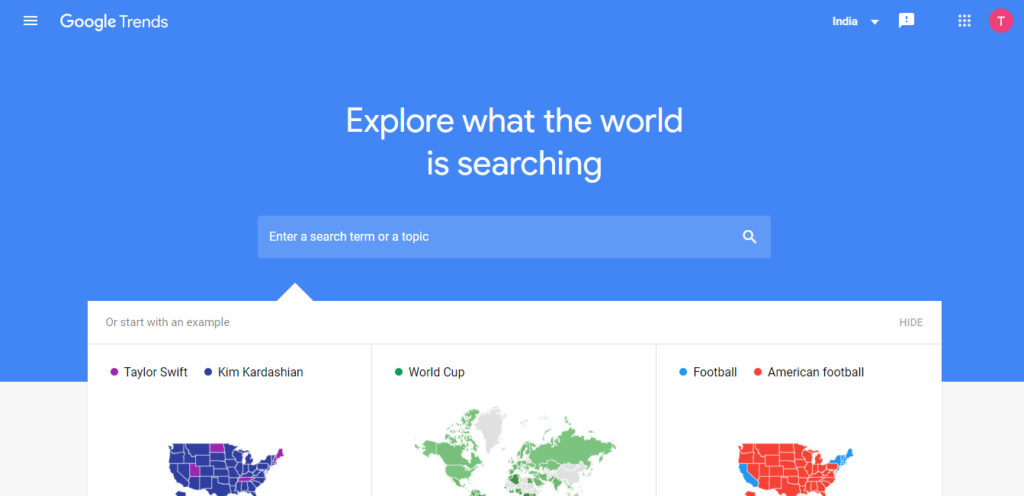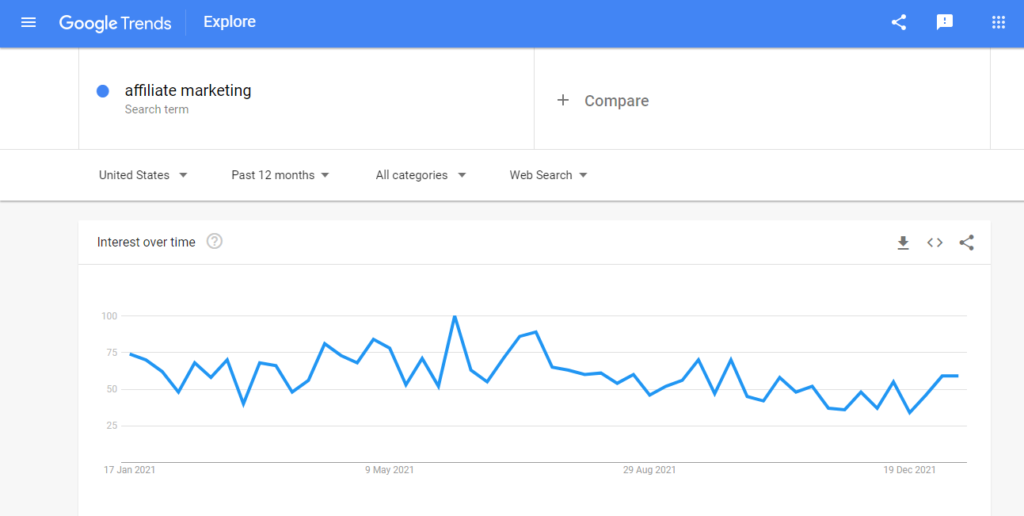Ways to Use Google Trends to Create Better Content

Google Trends is a great tool to consult when building content. Google Trends will give you the overall popularity of different search terms and topics over the years.
This makes it easier to decide what to write about and what would be appropriate for a particular audience.
It’s no secret that marketers have used it for years to create winning strategies to make their mark online. But just like any other tool, it’s only as good as how you use it.
In this post, I’ll be sharing with you how I use Google Trends to create better content.
What is Google Trends?
Have you ever gone online to search for an idea only to find that there is a lot of competition out there? Wouldn’t it be nice to know the most searched terms in your niche and see the popularity of those search terms over time? That’s what Google Trends can do for you.

But first, here’s a little background on this tool.
Google Trends contains a wealth of information gathered from Google Search and keyword searches. It’s powered by real-time popularity data based on Google searches over the past 12 months. It tells you what the people are searching right now, but also compares it to previous searches such as Google searches of the last 12 months.
5 ways to use Google Trends to create better content
There are tons of ways you can use Google Trends to create better content. The following are just a few of them.
1. Find relevant trending topics
One of the best ways to use Google Trends is to figure out what is trending.
When you’re building content for your blog, you’ll often stumble upon an idea that looks promising. But it could be easily overlooked because there are too many other options competing for the same search terms.
However, with Google Trends, you can easily find out what people around the world are searching for in your niche and how popular each search term has been over time.
The way I go about it is to go directly to Google Trends and type in keywords relevant to the content I want to write about. Just click on a search term and it will display a graph of its popularity over time.
Of course, it’s not a good idea to just go ahead and use all the topics you see on the screen. What I like to do is take a look at how popular these topics are. I’m not one to try and outrank a widely competitive keyword – instead I like to look for something that’s not too popular just yet.
When you choose a topic, make sure you’re comfortable writing content regarding it as well. You don’t want to focus on a topic you’re not truly interested in.
Read This Also - Off-page Seo Techniques To Drive Organic Traffic In 2021
2. Improve your keyword strategy
I’m sure you know that having a strong keyword strategy is one of the most important parts of SEO. But trying to rank for competitive keywords can be extremely difficult, especially if your blog is brand new.

What I like to do is use Google Trends to figure out how competitive keywords and topics are.
Go to Google Trends, enter a keyword and take a look at the graph for your search term. You will see the graph split into different leagues. This shows you how popular a given keyword is overall, as well as its search popularity in the past 12 months.
For example, if you’re trying to rank for “SEO for small businesses,” you might see that there are about 1.4% of searches for this term, which means you and your competitors will be competing with each other to rank high on the search engine results page (SERP).
On the other hand, if you’re trying to rank for “how to start an online business,” you will see that there have been only about 0.2% of searches for this term over the past 12 months.
It all really depends on your particular niche and what kind of competition you’re up against.
I like to use this information to come up with a list of keywords I want to rank for. Once I have the list, I try ranking for them, taking notice of how difficult it is to go from zero search volume to popularity within a certain period of time.
Usually, they’re very hard keywords and that’s why I’d rather start out by going after something easier and slowly work my way up over time.
3. Have a better understanding of your audience
When you’re building content for your blog, sometimes you will stumble upon a topic that seems promising, but is actually hard to write about. More often than not, it’s because the topic is hard to relate to and understand. But with Google Trends, you can easily determine what your audience thinks.
Just do a search on Google Trends and see what keywords people are searching for in your niche. When you click on a keyword, you can see how mainstream it is. In other words, what percentage of users in your niche are searching for it right now?
I find this extremely useful when you’re developing content and need to know if there’s enough people out there interested in what you’re writing about. It also helps me figure out whether or not that particular topic will be interesting to my audience.
I know a couple of entrepreneurs who have used Google Trends to gain a better understanding of their audience before launching their businesses. This way, they could streamline their content and marketing strategy so that they could focus on the parts of their business that will have the greatest impact.
4. Tailor a meaningful content calendar
If you’re working with a team on a project, it’s always a good idea to have a content calendar. A content calendar helps you plot out your content so that you can stay on track and deliver awesome content for your audience every week.

With Google Trends you can easily come up with blog topics to write about right now. Simply enter relevant keywords into the search box and see what people are searching for most in your industry. I like how quick and easy everything is. Whenever I’m having trouble filling out my calendar, I just spend a few minutes on the platform and I end up with a dozen topics to write about.
What’s even better is that you’re basically guaranteed a complete list of topics to write about that month. All my blog posts are written around the same time, so I don’t have any problem getting content written every week.
5. Rank higher in organic keyword searches
If you’re like most bloggers, you’ll be creating content around your main niche and then sharing it to social media platforms in order to get more traffic from other search engines. However, I often end up only getting a fraction of the traffic I was expecting because of how hard it is for me to rank for certain keywords.
Even though it’s difficult for me to rank for these keywords and I usually end up just getting a tiny fraction of them, Google Trends tells me that many people do go after these keywords. In some cases, I might get as much traffic as someone who ranks high with those keywords. I don’t have much of a choice but to rank for these keywords because I’m finding it hard to get my blog traffic from other search engines. But this will eventually change and I’ll be able to start getting more traffic from the other search engines.
When it does change, I want to help get my blog content off the ground and start getting more organic search traffic so that I can improve my ranking with those keywords.
Of course, this depends on a case-to-case basis on what you’re looking for. The main thought here is that you should use Google Trends to figure out what organic search keywords you’re going after so that you can improve your ranking with those keywords.
Conclusion
Google Trends is a great tool that you can use to help improve your blog. I find that there are many benefits of using it, including the fact that you have a list of keywords to rank for right away and your content calendar is already complete.
I’ve been using Google Trends ever since I started an affiliate marketing blog, and I highly recommend it to any blogger. You can use it to boost traffic and engagement, which is crucial for your blog if you want to make a profit.
If you really want to use it to the fullest and rank better in organic search, then spend some time writing about the topics that people are searching for. You can also use Google Trends to determine your audience so that you can create a content calendar and tailor a meaningful content calendar around your blog topics.
I hope you found this article useful and that it helped improve your blog or blog business in some way. Feel free to leave a comment if you want to add anything or ask any questions that might help boost your online biz.



